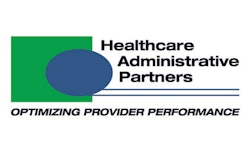
Patients in rehabilitation facilities sometimes need imaging services that cannot be provided within the facility itself. Imaging centers willingly accept these patients, but they can inadvertently fall into a collections quagmire if they aren't aware of the Medicare rules related to skilled nursing facilities. Following some of the procedures below can help centers handle these patients.
Establish a relationship
An imaging center can enhance its volume by establishing relationships with facilities such as senior citizen communities, assisted living facilities, and nursing homes located within its service area. Providing imaging services to residents of these facilities is no different than for any other outpatient population, although from a scheduling perspective the facility might request some block scheduling to accommodate transportation of several patients at the same time. By establishing a relationship with the facility, the imaging center can be assured of a steady stream of patients.
Learn how to bill Medicare correctly
Getting the billing information for these patients is simplified because the facility's offices can easily provide the necessary registration data, including the patient's current insurance coverage, and they can help with preauthorization when it is required. Billing the patient's insurance for the imaging services will usually be the same as for any other outpatient, with the exception of Medicare patients.
Services to Medicare patients who are residents of these facilities may be covered under Part A, Part B, or both. Most often the residents of senior and assisted living communities are considered regular outpatients and the imaging center sends its global claim to Medicare under Part B. However, when patients are in a skilled nursing facility (SNF), Medicare pays for the services provided to its beneficiaries under Part A, including most services provided by outside entities such as imaging centers.
In this case, payment is included in a bundled prospective payment made to the nursing facility. Accordingly, the imaging center must bill its technical component fee to the SNF and send its separate professional component bill directly to Medicare. This is analogous with the way billing is done for services in a hospital. The imaging center looks to the SNF for payment of the technical component and must not bill Medicare separately for those services.
Train your staff
The imaging center staff has to be sure to ask the facility for the patient's coverage status at the time of registration, and to do this for each and every visit. Patients often move from one area of a facility to another depending on changes in their condition, so they might not be billed the same way on subsequent trips to the imaging center.
While the Medicare billing rules should be well-known to the facility's management, they will resist paying an imaging center's bill that arrives after they have already submitted their claims to Medicare. Under the rules, services from outside entities have to be submitted by the facility on a consolidated bill. The process of billing and receiving payment from the facility should be carefully spelled out within the agreement between the facility and the imaging center to avoid any misunderstandings.
Conclusion
An imaging center will benefit from establishing a good relationship with senior communities, assisted living facilities, and nursing homes. By reaching out to such facilities and establishing an understanding upfront, the imaging center will be sure to get a volume of services from the facility, as well as benefit from a smoother registration, billing, and collection process for the facility's patients.
Carin Carlson is vice president of business development at Healthcare Administrative Partners (HAP), where she is responsible for all new business activity, including sales, marketing, product development, and strategic planning.
The comments and observations expressed herein are those of the author and do not necessarily reflect the opinions of AuntMinnie.com.



















